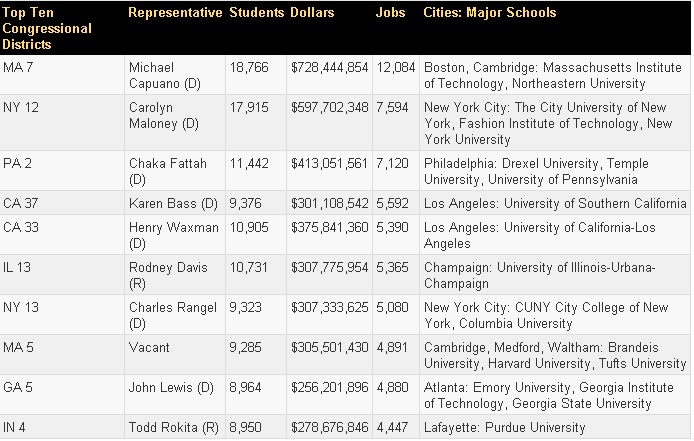NAFSA: Association of International Educators released new economic data today showing that the 764,495 international students studying across the United States supported nearly 300,000 jobs and contributed $21.8 billion to the U.S. economy in the 2011-2012 academic year.
Further analysis shows that for every 7 enrolled international students, 3 U.S. jobs are created or supported by spending in the following sectors: higher education, accommodation, dining, retail, transportation, telecommunications, and health insurance.
 “These data clearly show the tremendous economic costs we face unless Congress acts decisively to break down barriers for the best and the brightest international students and scholars to come here,” said NAFSA Executive Director and CEO Marlene M. Johnson.
“These data clearly show the tremendous economic costs we face unless Congress acts decisively to break down barriers for the best and the brightest international students and scholars to come here,” said NAFSA Executive Director and CEO Marlene M. Johnson.
“Congress must pass commonsense, comprehensive immigration reform so that we can expand our ability to recruit, integrate, and graduate talented international students, strengthen our economy, and reclaim the values that make this nation a land of opportunity, equality, and freedom.”
The United States is in a global competition for talented international students and scholars with other nations that have friendlier immigration policies. According to Organisation for Economic Co-operation and Development (OECD) findings, the number of international students studying worldwide nearly doubled from 2.1 million to 4.1 million over the past decade.
According to Institute for International Education Project Atlas data during that same time frame, the number of international students studying in the United States grew by 31%, while the percentage share of international students worldwide studying in the United States decreased by 10%.
In addition to the important economic benefits international students bring to the United States, they contribute incalculable academic value to U.S. colleges and universities and cultural value to local communities as international enrollments grow.
While NAFSA releases new economic data each fall, today marks the release of new jobs data and a new searchable data set and interactive map. The tool highlights ten-year trends while data can be broken down by region, state, and congressional district.
The economic benefit analysis and online tool was developed working closely with Indiana University-Bloomington’s Office of International Services Information Services team, led by Jason Baumgartner, director of information services. The analysis is conducted using international student enrollment data provided by the Institute of International Education’s annual Open Doors report, and tuition and expense data provided by Wintergreen Orchard House, a leading college data provider. The jobs analysis is conducted using the above analysis along with U.S. Department of Commerce data and additional research on an extended multiplier effect on innovation sectors by University of California-Berkeley economics professor Enrico Moretti.

